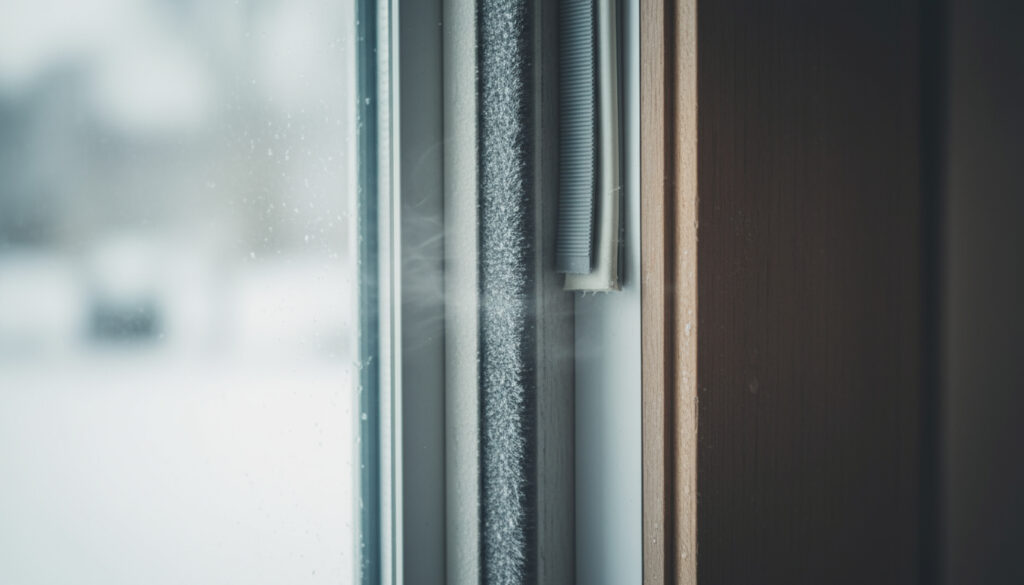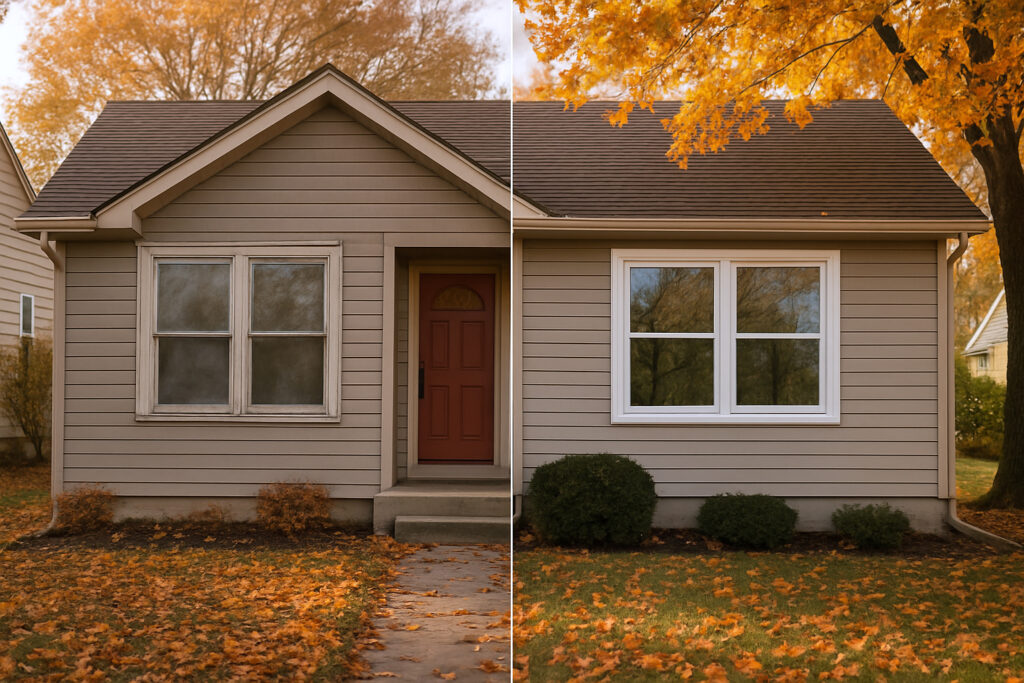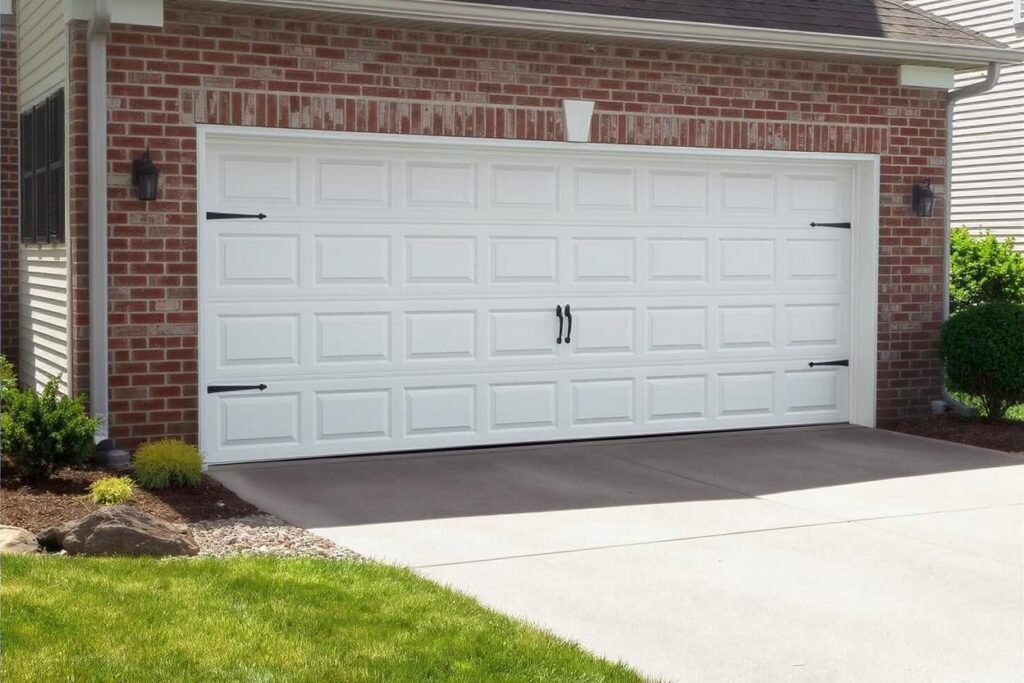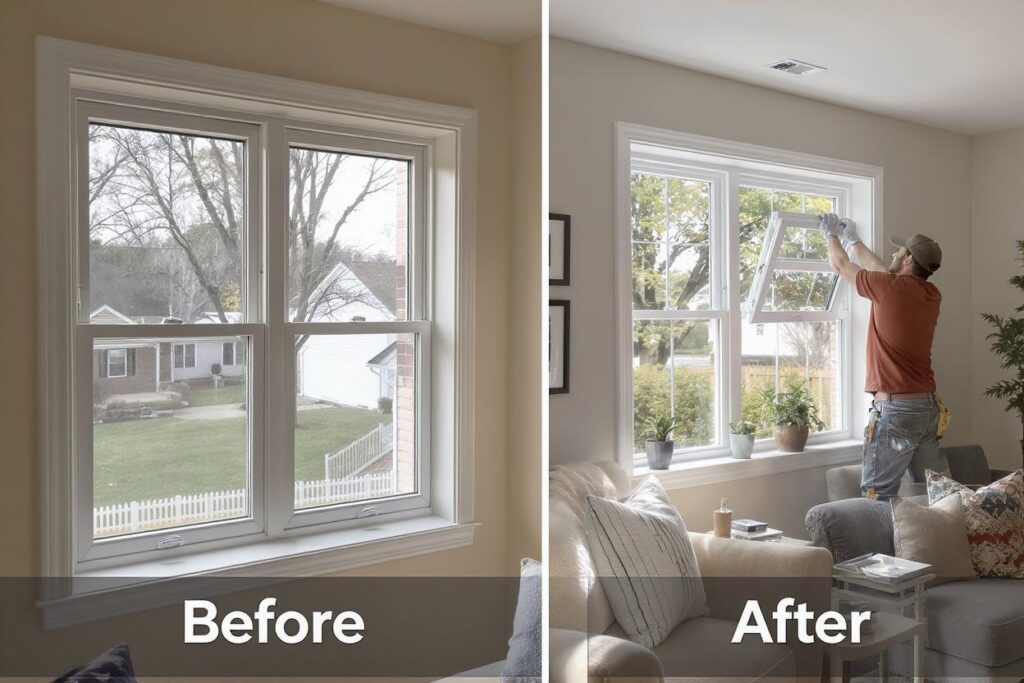
Ohio winters are notorious for their harsh conditions, with temperatures often plummeting below freezing and fierce winds that can find every crack and gap in your home’s defenses. One of the most effective yet overlooked methods to combat these winter challenges is proper door weather stripping. This comprehensive guide will equip you with the knowledge and techniques needed to winter-proof your doors effectively, potentially saving you hundreds of dollars on heating bills while keeping your family comfortable throughout the coldest months.
Understanding Ohio’s Winter Challenges
Ohio experiences some of the most variable winter weather in the Midwest, with average temperatures ranging from 20°F to 35°F during peak winter months. The state’s geography creates unique weather patterns that include lake-effect snow near Lake Erie, ice storms throughout central regions, and persistent cold snaps that can last for weeks. These conditions create significant challenges for homeowners trying to maintain comfortable indoor temperatures while managing energy costs.
When doors lack proper weather stripping, heated air escapes while cold air infiltrates your home continuously. This creates drafts that make rooms feel colder than the thermostat reading, forces your heating system to work harder, and can increase energy bills by 10-20% during winter months. Additionally, poor door sealing can lead to moisture problems, including condensation buildup and potential frost formation around door frames.
Signs Your Doors Need Weather Stripping Attention
Recognizing when your doors need weather stripping replacement or repair is crucial for maintaining home comfort and efficiency. Several clear indicators suggest immediate attention is required.
Visual inspection reveals obvious problems. Look for cracked, compressed, or missing weather stripping around door frames. Pay special attention to corners where weather stripping often fails first due to repeated door usage and weather exposure. If you notice gaps where daylight is visible around a closed door, weather stripping replacement is definitely needed.
The dollar bill test provides a simple diagnostic tool. Close a dollar bill in your door at various points around the frame. If you can easily pull the bill out without resistance, the weather stripping isn’t creating an adequate seal. This test should be performed at multiple locations, including the top, sides, and bottom of the door.
Physical sensations indicate sealing problems. Standing near doors during windy conditions, you might feel air movement or drafts. Some homeowners notice temperature variations near doors or hear whistling sounds when wind is strong. These sensations clearly indicate inadequate weather stripping performance.
Types of Weather Stripping Materials
Choosing the right weather stripping material depends on your door type, budget, and local climate conditions. Each material offers distinct advantages and limitations that make them suitable for different applications.
Foam Weather Stripping
Foam weather stripping represents the most affordable and easiest-to-install option for many homeowners. Made from adhesive-backed foam rubber or vinyl, this material compresses when doors close, creating a basic seal against air infiltration. However, foam weather stripping typically lasts only 1-2 years in Ohio’s climate due to temperature cycling and UV exposure degradation.
Foam works best for doors with consistent gaps and minimal warping. Installation involves simply removing the adhesive backing and pressing the foam into place along door frames. While not the most durable option, foam weather stripping provides excellent value for temporary solutions or rental properties.
Rubber and Vinyl Weather Stripping
Rubber and vinyl weather stripping offers superior durability and weather resistance compared to foam alternatives. These materials maintain flexibility in cold temperatures while resisting cracking and UV damage. Quality rubber weather stripping can last 5-10 years with proper installation and maintenance.
V-strip weather stripping, made from vinyl or rubber, creates an excellent seal by folding against the door when closed. This design accommodates slight door movements and warping while maintaining consistent contact. Installation requires more precision than foam but results in significantly better long-term performance.
Metal Weather Stripping
Metal weather stripping, typically made from bronze, aluminum, or stainless steel, provides the longest-lasting solution for door sealing. These materials resist all weather conditions and maintain their shape indefinitely when properly installed. Metal weather stripping works particularly well for heavy doors or those experiencing significant temperature variations.
Spring bronze weather stripping creates a tension seal that adjusts automatically to accommodate door movement and settling. While more expensive initially, metal weather stripping often proves most economical over time due to its longevity and superior performance.
Professional Installation Techniques
Proper weather stripping installation requires attention to detail and understanding of door mechanics. These professional techniques ensure optimal performance and longevity.
Preparation is critical for success. Clean all door frame surfaces thoroughly, removing old weather stripping residue, dirt, and debris. Sand rough areas smooth and ensure frame alignment is correct. Doors that bind or don’t close properly need adjustment before weather stripping installation.
Measurement accuracy prevents waste and ensures proper fit. Measure each section of door frame separately, as dimensions often vary slightly. Add 10% extra material to account for cutting waste and potential measurement errors. Purchase weather stripping designed for your specific door type and local climate conditions.
Installation sequence matters for optimal results. Install weather stripping on the hinge side first, followed by the top, then the latch side. This sequence prevents binding and ensures smooth door operation. Install bottom door sweeps or thresholds last to coordinate with side weather stripping.
Energy Efficiency and Cost Benefits
Proper door weather stripping delivers substantial energy savings that justify the investment many times over. Understanding these benefits helps homeowners make informed decisions about weather stripping upgrades.
Heating cost reduction represents the primary benefit. Well-sealed doors can reduce heating bills by 15-25% in typical Ohio homes. For a home with $200 monthly winter heating costs, weather stripping could save $30-50 monthly during peak winter months. Over a typical 5-month heating season, total savings range from $150-250 annually.
Improved comfort extends beyond financial savings. Eliminating drafts creates more consistent temperatures throughout your home, reducing hot and cold spots that make some rooms uncomfortable. This improved comfort often allows homeowners to set thermostats 2-3 degrees lower while maintaining the same comfort level, creating additional energy savings.
HVAC system longevity increases with reduced workload. When doors are properly sealed, heating systems cycle less frequently and run more efficiently. This reduced workload extends equipment life and decreases maintenance requirements, providing additional long-term value.
Maintenance and Seasonal Care
Regular maintenance ensures weather stripping continues performing effectively throughout multiple winter seasons. Simple maintenance tasks can extend weather stripping life significantly while maintaining peak performance.
Seasonal inspection should occur twice yearly. Examine weather stripping before winter arrives and again in spring after harsh weather ends. Look for compression damage, cracking, adhesive failure, or displacement. Replace damaged sections immediately to prevent problems from worsening.
Cleaning weather stripping removes debris that compromises sealing. Use mild soap and water to clean rubber or vinyl weather stripping, removing accumulated dirt, leaves, and ice residue. Avoid petroleum-based cleaners that can damage rubber materials. Allow weather stripping to dry completely before cold weather arrives.
Lubrication keeps moving parts functioning smoothly. Apply silicone spray to hinges and door hardware to prevent binding that can damage weather stripping. Avoid oil-based lubricants that attract dirt and can degrade rubber materials over time.
When to Call Professionals
While many weather stripping projects are suitable for DIY installation, certain situations require professional expertise to achieve optimal results.
Complex door systems need professional attention. Multi-point locking systems, commercial doors, or custom installations often require specialized knowledge and tools. Professional installers understand how different door components interact and can ensure weather stripping doesn’t interfere with security features.
Structural issues must be addressed first. Doors that don’t close properly due to settling, warping, or frame problems need professional evaluation. Installing weather stripping on improperly functioning doors provides poor results and wastes money.
Energy efficiency audits provide comprehensive solutions. Professional energy auditors can identify all air leakage sources in your home, prioritizing improvements for maximum impact. This comprehensive approach often reveals problems homeowners miss during DIY inspections.
Don’t let another Ohio winter drain your energy budget through poorly sealed doors. Ellis Door & Window has helped countless Ohio homeowners achieve optimal door performance and energy efficiency for over two decades. Our certified technicians understand the unique challenges Ohio winters present and can recommend the perfect weather stripping solution for your home and budget. Call Ellis Door & Window today at (419) 228-3667 for a free consultation and estimate. Protect your family’s comfort and your wallet this winter with professional-grade door weather stripping installation.



